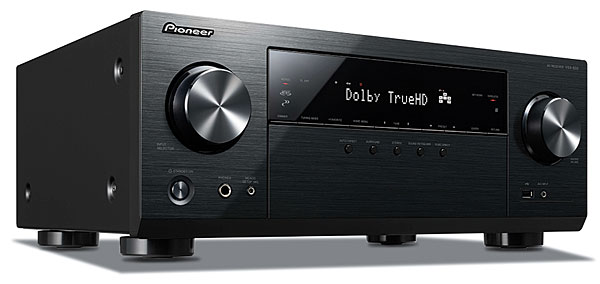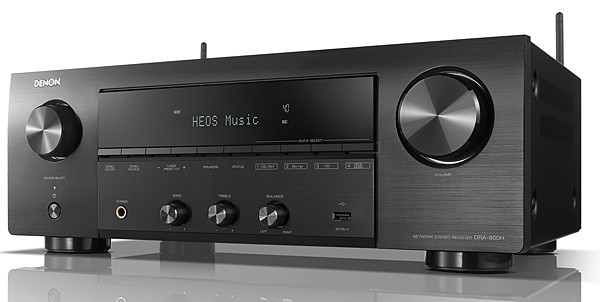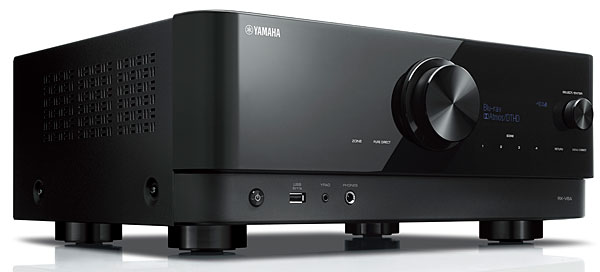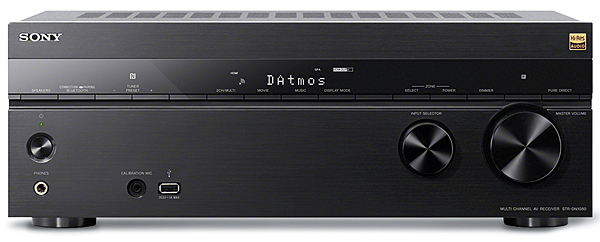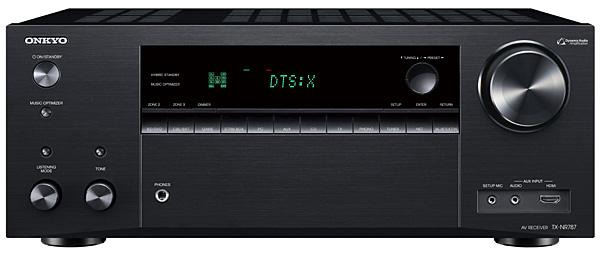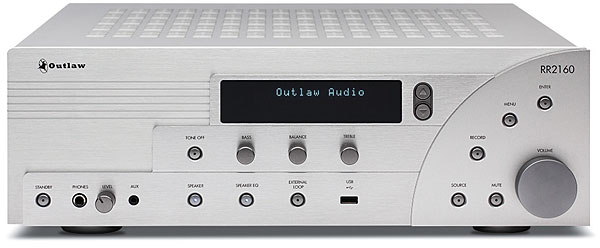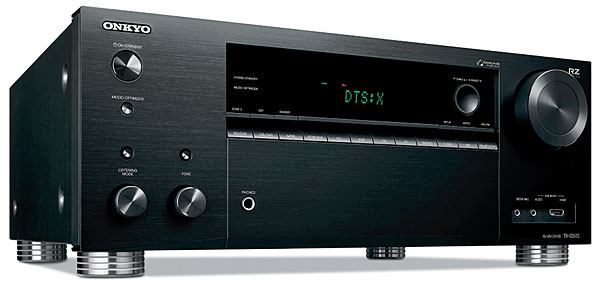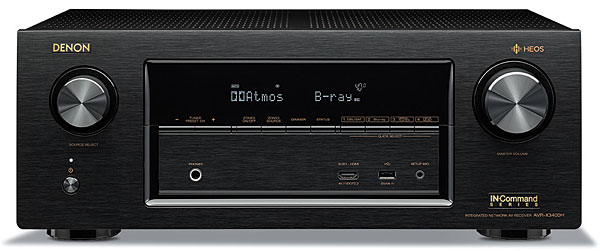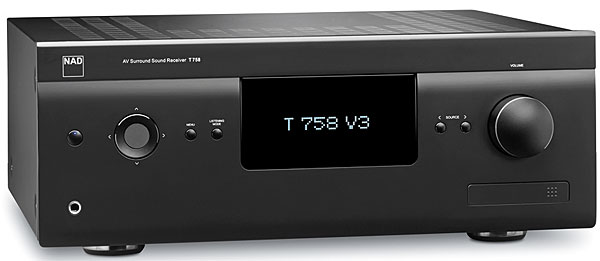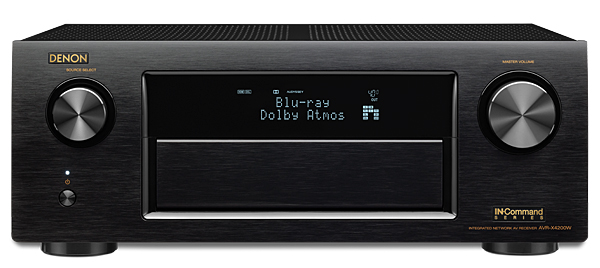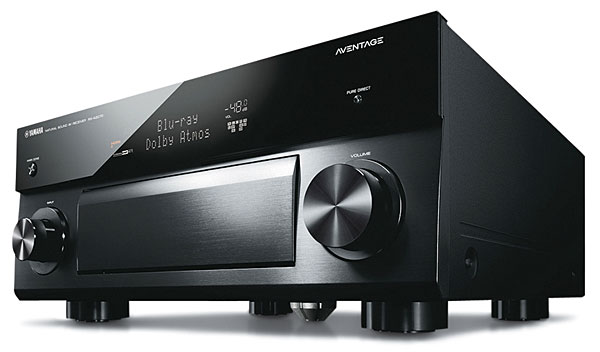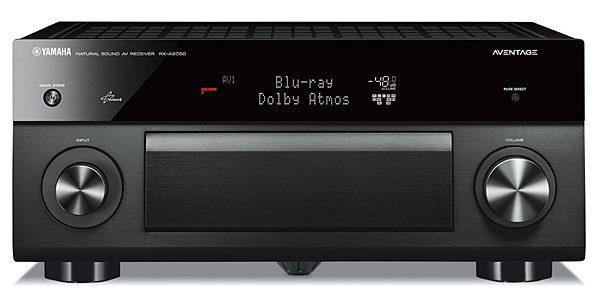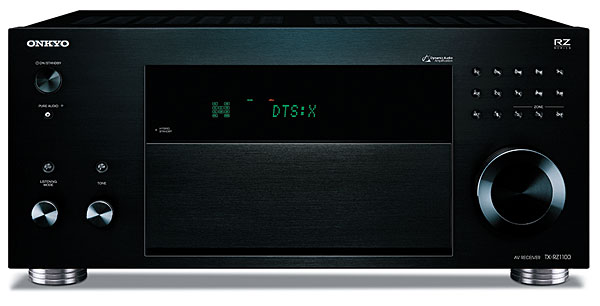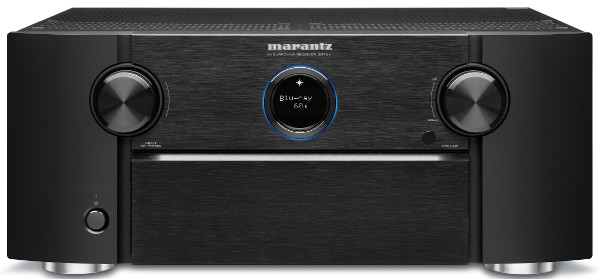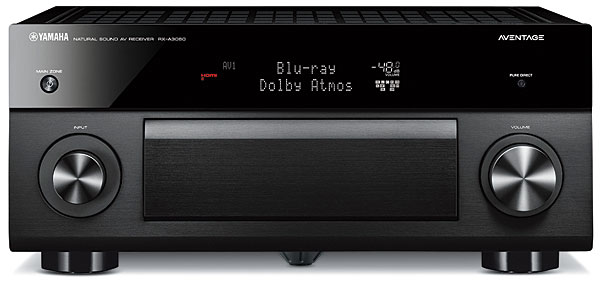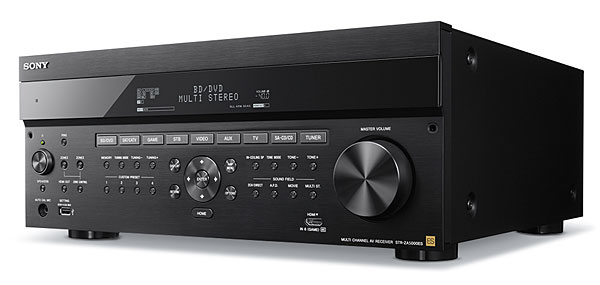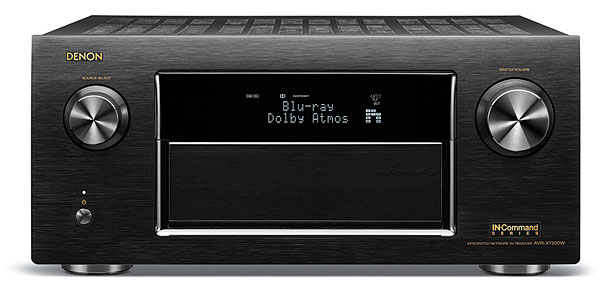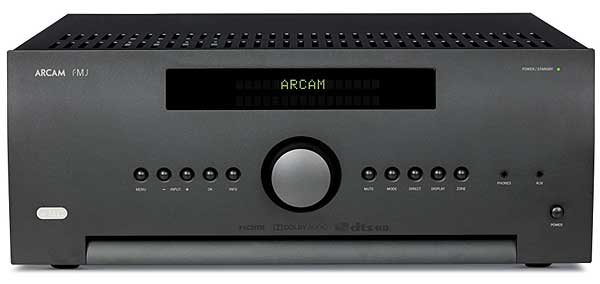How to Buy an AV Receiver in 2024 Want to experience surround sound at home? Then ditch the soundbar and get an AV receiver. Here’s what you should know. Best receiver and speakers What about HDMI? Built in Wi-Fi, AirPlay and Bluetooth Sound quality: How much does it matter? The best AV receiver is the one you already own Wrap-up and FAQs Sarah Tew/CNET Best Dolby Atmos speakers Klipsch Reference Theater Pack 5.1 If you’re just starting out with surround sound, then buying a complete speaker package makes a lot of sense.

Want to experience surround sound at home? Then ditch the soundbar and get an AV receiver. Here’s what you should know.
- Best receiver and speakers
- What about HDMI?
- Built in Wi-Fi, AirPlay and Bluetooth
- Sound quality: How much does it matter?
- The best AV receiver is the one you already own
- Wrap-up and FAQs
Sarah Tew/CNET
Best Dolby Atmos speakers
Klipsch Reference Theater Pack 5.1
If you’re just starting out with surround sound, then buying a complete speaker package makes a lot of sense. The Klipsch Reference Theater Pack is not only a great-sounding set, but it’s also available for an affordable price.
Read the CNET review.
Klipsch Reference Theater Pack 5.1
You can also take a look at CNET’s list of the best AV receivers, which includes some other solid alternative options. If you’re looking for more information or context, here’s what’s important.
What about HDMI?
Almost every AV device sold today uses HDMI, making the number of HDMI inputs on a receiver a very important consideration. There’s no one-size-fits-all answer to how many is enough. If you love gaming and streaming you might need six or more, whereas others could get by with three or fewer. We recommend getting at least one more HDMI input than you currently need. Even if you feel confident that you’ll never need more than four devices, you never know when a neat new product will come out we’re sure plenty of people wished they had an extra port as soon as Sony’s PlayStation 5 was announced, for instance.
You may not need seven HDMI inputs right now, but at some point, you will.
Sarah Tew/CNETYou can always theoretically expand your HDMI connectivity options later with an HDMI switcher, but it’s a less elegant solution. (Although a universal remote can help.) Considering the fact that you’re likely to hold onto an AV receiver for upward of five years, it’s worth investing in a little extra HDMI connectivity.
4K vs. 8K
Just when you thought that it was safe to buy a 4K TV, manufacturers found another four K’s seemingly behind the sofa. Many new receivers, such as the Onkyo above, support 8K via the HDMI 2.1 standard, and they can be worth considering even if you don’t see an 8K TV in your immediate future.
The most interesting part of this enhanced connectivity is eARC, the ability to pass Dolby Atmos and other hi-res formats from a TV to your home theater system. If you have a recent, compatible TV you don’t need to worry about the number of HDMI ports on your receiver, just use the television as a switcher.
HDMI 2.1
HDMI 2.1 is of most importance for gamers who want the advanced functionality of the Xbox Series X and S and PS5, namely 4K/120Hz and VRR. Yet, it’s not a “must have” because If your receiver lacks HDMI 2.1 inputs you can connect those consoles directly to a compatible TV, not to the receiver, and then use eARC to pass audio to the receiver. While early 8K receivers had an issue known as the 4K/120Hz bug, which meant they couldn’t pass VRR content, any 2024 receiver should be free of this issue.
If you opt for an older receiver, make sure it has at least 4K compatibility, to make the most of 4K streaming and gaming for the latest TVs. This means one that boasts at least HDMI 2.0a and HDCP 2.2 certification.
Read more: Best AV Receiver for 2024
Do I need Wi-Fi, AirPlay or Bluetooth?
AV receivers have a history of adding dubious features that aren’t all that useful, but built-in support for wireless technologies such as multiroom audio, AirPlay, Google Cast and Bluetooth are very useful. Here’s the pitch for wireless connectivity: Load up any app on your smartphone or tablet – such as Pandora or Spotify – and you will be able to wirelessly stream music to your AV receiver in seconds. It’s the ultimate in instant gratification, especially if your music habits tend to revolve around your mobile device.
While most receivers now connect to the internet over Wi-Fi, it’s worth looking for a receiver that’s compatible with streaming services. Some receivers have their own proprietary apps – such as Yamaha’s MusicCast or Denon’s HEOS – and most are also able to offer a direct connection to popular apps such as Spotify and Tidal.
Smart speakers allow you to control a modern AV receiver.
Tyler Lizenby/CNETBluetooth, AirPlay and Google Cast are similar but have some key differences. Bluetooth works with nearly every smartphone and tablet (including Apple devices) within a range of about 30 feet, with the drawback being its somewhat diminished sound quality. AirPlay is designed specifically for Apple devices, with some exceptions, and it offers lossless, CD-audio quality. Unlike Bluetooth, it does require your receiver to be connected to your home network, while the upgraded AirPlay 2 adds multiroom capability. Google’s Cast or Chromecast built-in is also able to stream to multiple rooms, is compatible with both Android and (increasingly) iOS apps, and offers higher-than-CD hi-res quality (24bit/96kHz).
One other key feature that modern receivers allow is voice control – being able to ask your Google Assistant or Amazon Echo for a song and having it play through the receiver is one of life’s small joys.
While it’s possible to add Bluetooth and AirPlay to any AV receiver using an external device, purchasing it built-in can be more convenient. The Onkyo TX-NR6100, for example, can automatically turn on and flip to the correct input whenever you select an audio app on your smartphone or tablet. You just can’t get that level of convenience using a separate device.
Sound quality: How much does it matter?
Every brand touts its superior sound, but my advice would be to not worry much about sound quality when buying an AV receiver.
That may seem counterintuitive for a device whose entire purpose is to enable high-fidelity audio, but the reality is audible differences between typical AV receivers are not as noticeable as the differences between speakers. It’s a regularly debated issue for audio enthusiasts, but to many people, all AV receivers sound the same in normal circumstances.
Most receiver brands are geared toward providing better home theater sound than music, although there are some exceptions including the sister brands Denon and Marantz. Be aware that some receivers are also tuned specifically for each market: for example, a Sony receiver will sound different in the US from the way it does in the UK or Australia.
This Klipsch Reference Cinema System 5.1.4 With Dolby Atmos surround sound offers great performance for under $500.
Josh Goldman/CNET
The best AV receiver is the one you already own
If you already have an AV receiver, think twice before upgrading. While smartphones and laptops get big performance increases every year, you’re not going to get the same kind of boost with a new AV receiver. The one you bought years ago probably sounds just as good.
Depending on the age of your receiver the most recent thing you’ll be missing out on is support for new formats such as 8K, Dolby Atmos and DTS:X. You might then be tempted to upgrade if you have an older AV receiver without HDMI connectivity, as you’ll also miss out on other formats such as Dolby TrueHD and DTS Master Audio. Coaxial and optical digital cables are limited to plain Dolby Digital/DTS but the differences between those formats can be hard to hear even in ideal situations. Many devices have separate digital audio outputs, allowing you to run video to your TV via HDMI and audio to an older receiver with a digital audio cable. That involves more input switching, but you can solve that problem easily with a quality universal remote.
Don’t count out your AV receiver just because it’s old.
DenonAnother option is connecting all your HDMI sources straight to your TV, and then using your TV’s digital output to connect to your receiver. The downside is that some TVs “dumb down” incoming audio to stereo, but it’s a slick workaround if you have a two-channel speaker system.
Wrap-up: Focus on the big features
Once you find a few models with the right number of HDMI inputs and the wireless technologies you want, you should have a relatively short list of models to consider. I’d recommend reading some professional reviews (including ours) before making the final choice, as well as user reviews to see if there are any long-term issues that wouldn’t crop up during a review period.
Most of all, it’s worth remembering that AV receivers, much more than other home audio devices, are all pretty similar. Speakers and headphones can look and sound very different, but AV receivers mostly look and sound the same. I think AV receivers could get a lot better, but they’re still your best option if you want high-quality sound.
FAQs
Is an Atmos receiver worth it?
Dolby Atmos is great, and with the latest Netflix series or movie on Max, a system can add a feeling of height unknown to home cinemas before now. Yet, it’s an undisputed fact that most content out there is still either in stereo or 5.1, even with streaming. As Atmos uses at least seven channels, if you’re adding ceiling-pointing speakers to your existing speakers it may not be as big of an upgrade as putting the extra money toward better stereo speakers. It’s a classic case of diminishing returns: 5.1 sounds significantly more immersive than stereo, but the difference between 5.1 and Atmos isn’t nearly as great, and you need to have the content to support it.
How much power do I need in a receiver?
Comparing the wattage specs on AV receivers won’t tell you much. Power ratings aren’t standardized, so there’s no guarantee that one company’s 100-watt-per-channel receiver will sound louder than another company’s 50-watt-per-channel receiver. In general, try to look for a rating like “20Hz-20kHz, <1% THD in stereo” if it’s available. Keep in mind that more than 1% distortion is noticeable and you wouldn’t want to drive your speakers that hard.
For typical home theater speakers and rooms, modern AV receivers offer plenty of power. CNET’s listening room is medium-sized, but we’ve never run into an AV receiver that didn’t have the capability to get louder than an average person would choose.
What about second-zone audio?
One of the benefits of getting a 7.1-channel AV receiver (over a 5.1 model) is that the extra two channels can often be used to power a second set of speakers. Most 7.1 AV receivers can even pump different audio sources into different rooms (referred to as “second-zone audio”): one person can watch TV in the living room, while someone else listens to a CD in the bedroom.
It’s a neat idea, but it’s much more limited than it sounds. Most AV receivers can’t send any incoming digital sources (HDMI and digital audio inputs) to the second zone, which is going to include most devices connected to the receiver. You’ll also need to run wires from your primary room to the secondary room, which isn’t always easy. Finally, remember that you probably won’t be able to control the second source with a remote when you’re in another room, although AV receivers with smartphone control get around this somewhat.
So even if you think you want second-zone functionality, make sure you’re aware of all the limitations. In many cases, it’s easier to get a small, separate system (or Bluetooth speaker) for the second room. If you want a true multiroom audio system, check out our roundup of the best Wi-Fi systems, including the excellent WiiM Pro which will integrate with most AV receivers.
Should I worry about automatic speaker calibration?
Automatic speaker calibration sounds like a great idea, letting you use an included microphone to adjust speaker levels and apply EQ to accommodate your listening room. In practice, it doesn’t always work that well. In fact, in our recent roundup of AV receiver reviews, automatic speaker calibration was consistently off-balance, almost always setting the subwoofer volume level incorrectly. If you really care about sound, you’re better off learning how to manually set your speaker levels.
More entertainment advice
-
Best AV Receiver in 2024
-
Best Speakers of 2024
-
Best Home Theater Systems of 2024
-
PS5 and Xbox Series X Can Game in 8K Resolution. Should You Care?
-
Best AV Receiver in 2024
-
Best Speakers of 2024
-
Best Home Theater Systems of 2024
-
PS5 and Xbox Series X Can Game in 8K Resolution. Should You Care?
TVs Streaming & TV Accessories Speakers Projectors Other Home Entertainment
FAQ
Is Onkyo better than Denon?
Is Denon superior to Onkyo? Both brands have carved their niches and are revered in the audio world. Denon is known for precision and features, while Onkyo is synonymous with power and value. Your choice should be dictated by your specific preferences and requirements.Oct 22, 2023
Is Onkyo made in Japan?
Onkyo Corporation (オンキヨー株式会社, Onkyō Kabushiki-gaisha) is a Japanese consumer electronics company, specializing in premium home cinema and audio equipment, including AV receivers, surround sound speakers and portable devices.
What is AV in amplifier?
An AV (Audio-Visual) receiver is a central hub for your home entertainment system, designed to enhance and streamline the audio and video experience. It serves as the heart of your home theater setup, connecting various audio and video sources to your speakers and TV or projector.14 июн. 2024 г.
Are AV processors worth it?
While the most powerful receivers can offer around 13 channels at up to around 150W in stereo, with an AV processor and power amp, you can not only up the channel ante but also increase that wattage by a considerable amount to drive all the loudspeakers and subwoofers in home cinema installs of even epic proportions.Jun 15, 2023
What is the best AV receiver brand?
With 4K, the entire chain needs to be 4K compatible. So if you buy a new 4K TV, want to feed it 4K via HDMI sources, and want to switch those sources using an AV receiver (as opposed to the TV), you’ll need to buy a new receiver that handles those 4K sources.17 Apr 2024














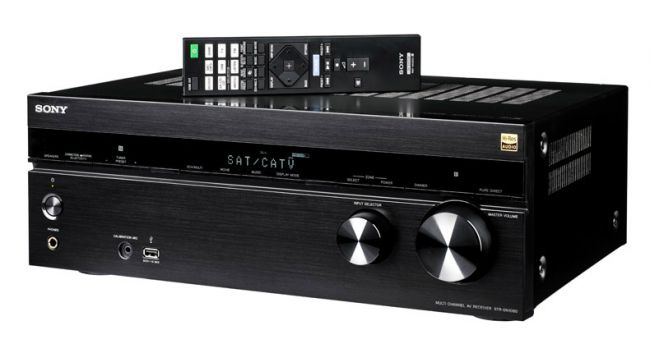
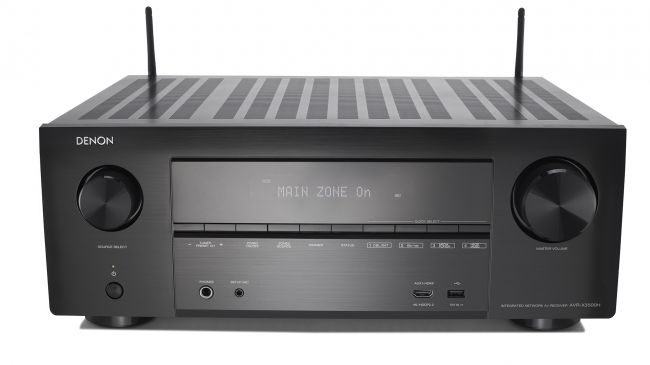
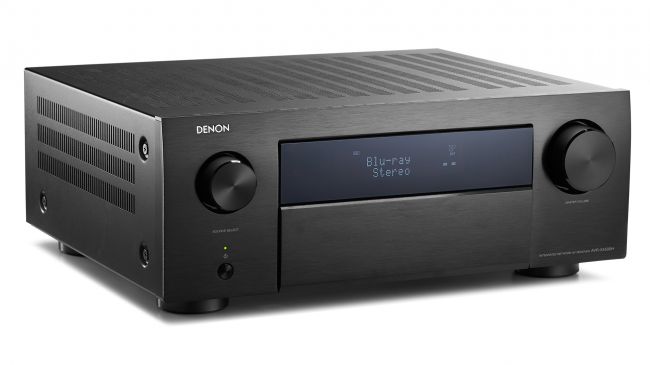
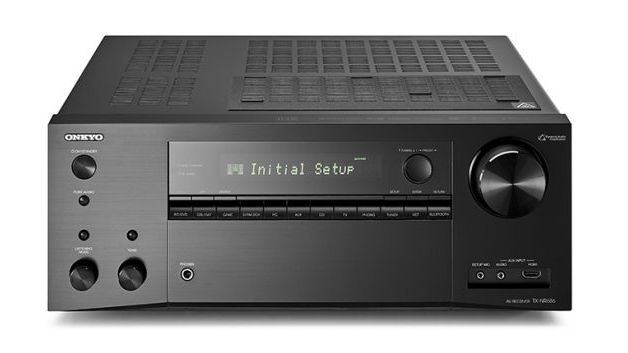
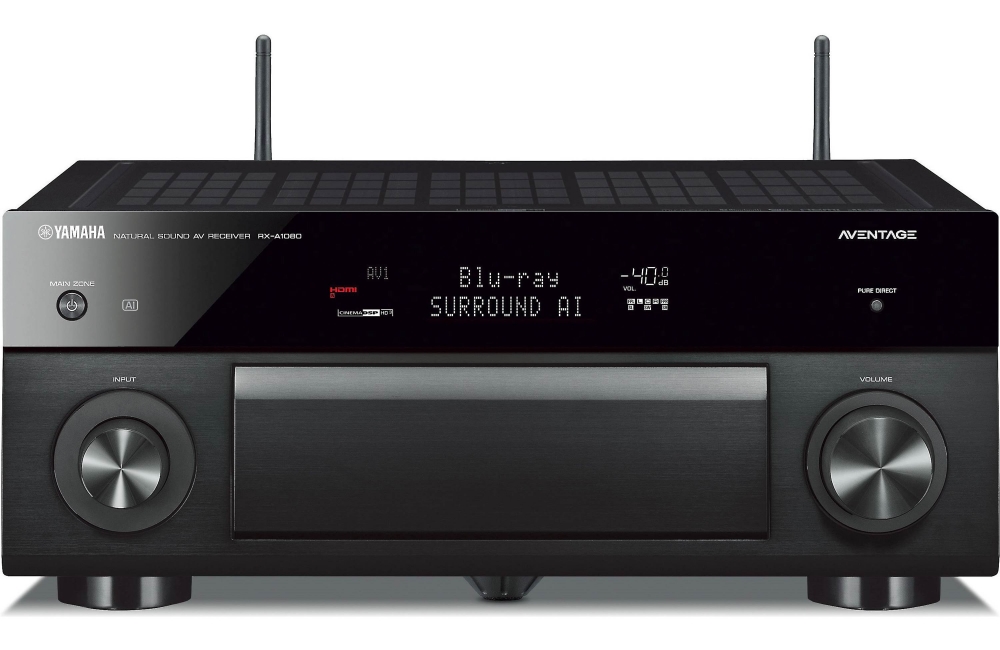
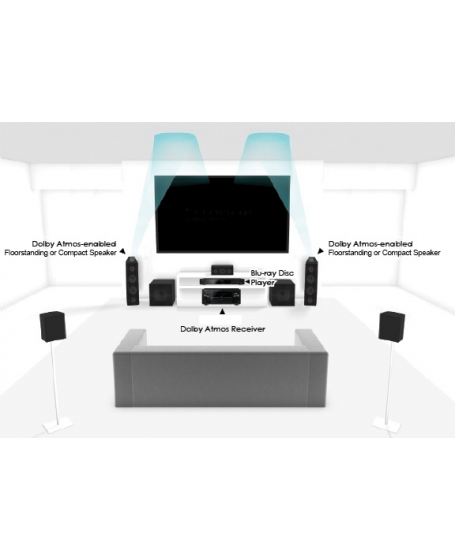
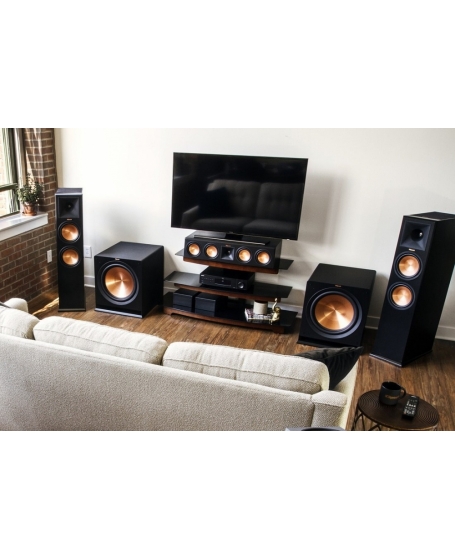 Features Add to Cart Quick View
Features Add to Cart Quick View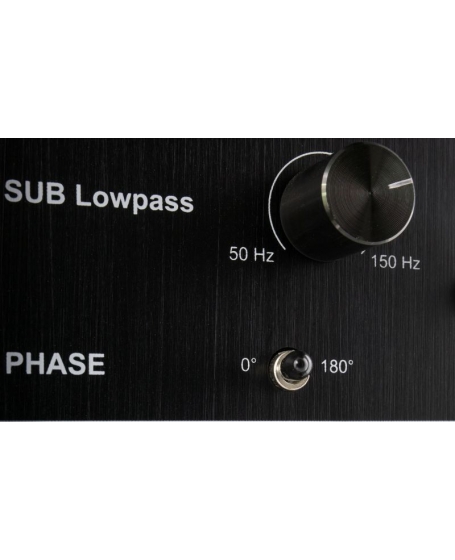
 Features Add to Cart Quick View
Features Add to Cart Quick View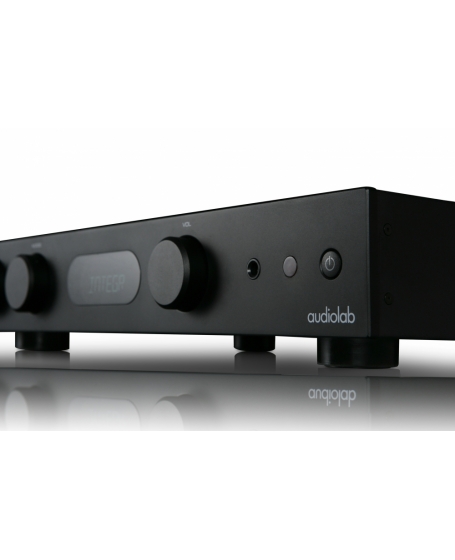
 Features Add to Cart Quick View
Features Add to Cart Quick View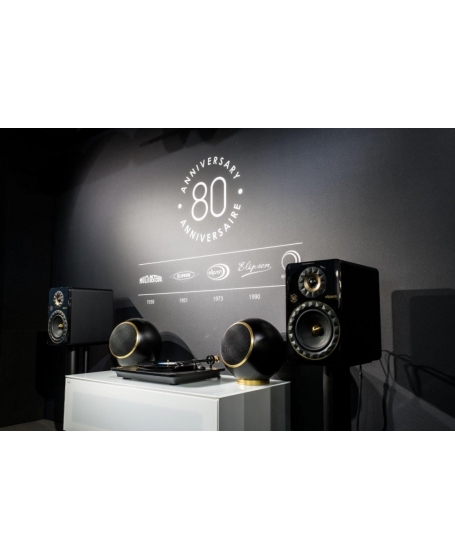
 Features Add to Cart Quick View
Features Add to Cart Quick View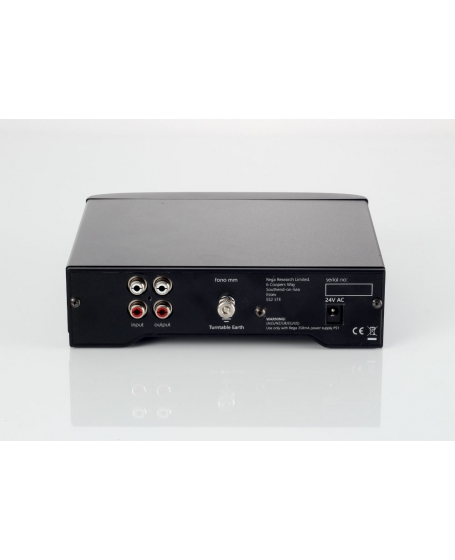
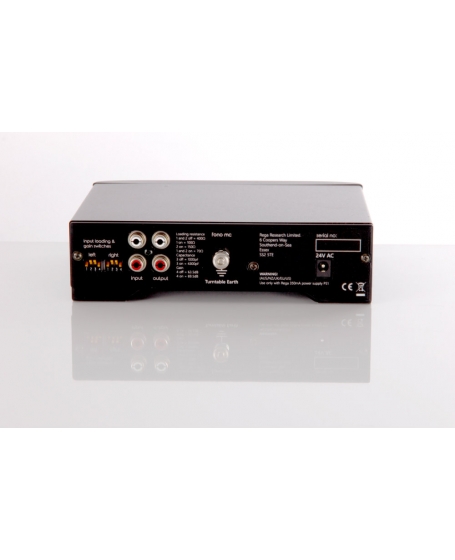 Features Add to Cart Quick View
Features Add to Cart Quick View
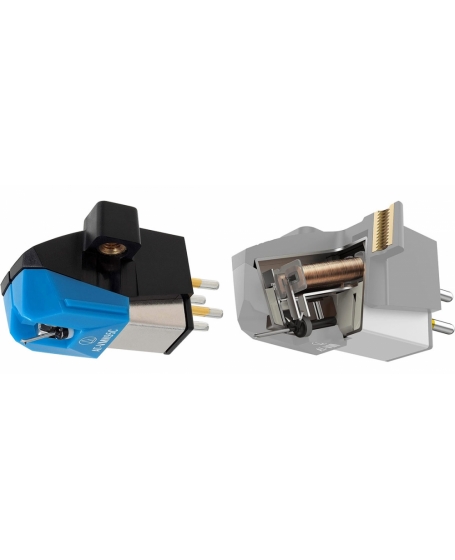 Features Add to Cart Quick View
Features Add to Cart Quick View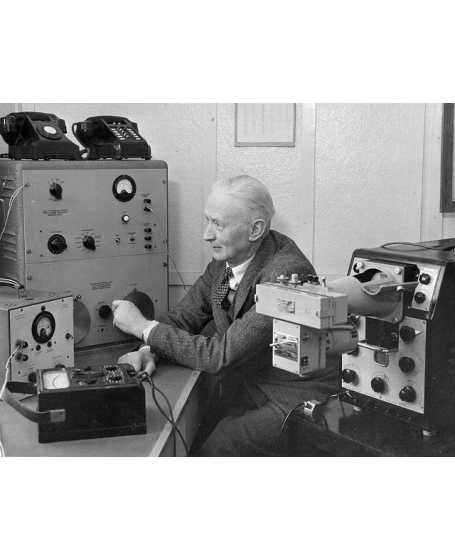
 Features Add to Cart Quick View
Features Add to Cart Quick View
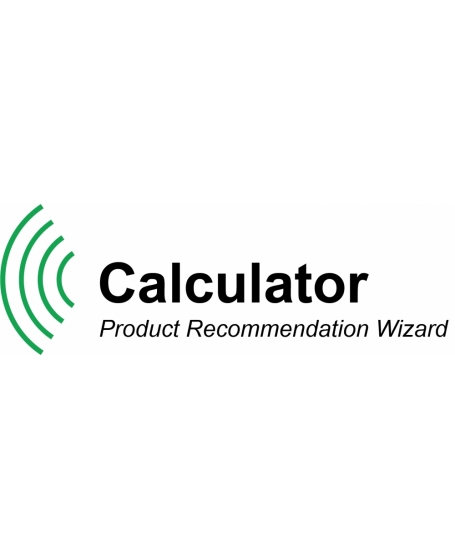 Features Add to Cart Quick View
Features Add to Cart Quick View


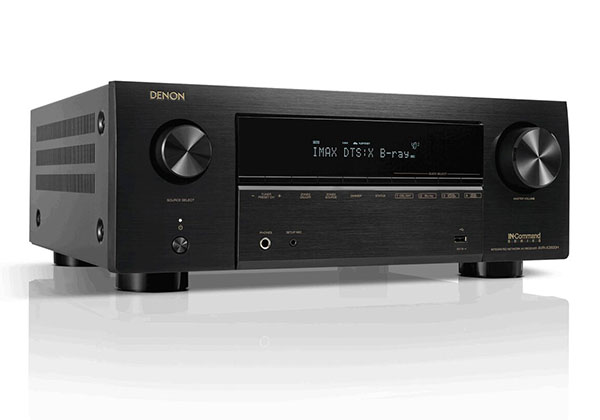 Denon AVR-X3800H AV Receiver: $1,700 fourRead Full Review
Denon AVR-X3800H AV Receiver: $1,700 fourRead Full Review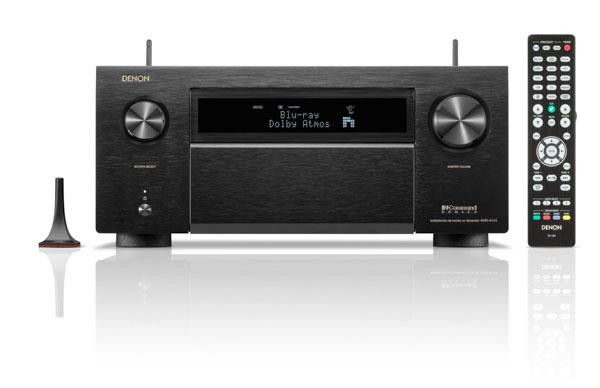 Denon AVR-A1H AV Receiver: $6,499 The Denon AVR-A1H lives up to its flagship appellation and then some. If 15 channels of power (150 watts apiece) isn’t enough, consider the inclusion of Auro-3D and IMAX processing along with the usual Dolby Atmos and DTS:X, Audyssey MultEQ XT 32 room correction and (extra cost) Dirac Live Bass Control, four independent subwoofer outputs with optional balanced XLR connections, seven HDMI inputs and three outputs, the ability to feed stereo music to two additional rooms…the list goes on and on and on. You really need to read the full report. If the best is what you seek, the AVR-A1H belongs on your audition list. (Posted 5/8/24, Read Full Review)
Denon AVR-A1H AV Receiver: $6,499 The Denon AVR-A1H lives up to its flagship appellation and then some. If 15 channels of power (150 watts apiece) isn’t enough, consider the inclusion of Auro-3D and IMAX processing along with the usual Dolby Atmos and DTS:X, Audyssey MultEQ XT 32 room correction and (extra cost) Dirac Live Bass Control, four independent subwoofer outputs with optional balanced XLR connections, seven HDMI inputs and three outputs, the ability to feed stereo music to two additional rooms…the list goes on and on and on. You really need to read the full report. If the best is what you seek, the AVR-A1H belongs on your audition list. (Posted 5/8/24, Read Full Review) Onkyo TX-NR7100 9.2-Channel Atmos A/V Receiver: $1,099 Read Full Review
Onkyo TX-NR7100 9.2-Channel Atmos A/V Receiver: $1,099 Read Full Review  Pioneer VSX-LX505 Elite 9.2-Channel A/V Receiver: $1,499 The Pioneer VSX-LX505 provides a lot of bang for your buck, including nine channels for powering a full Dolby Atmos or DTS:X setup, 8K-ready HDMI inputs with variable refresh, and two excellent auto-EQ options — Dirac Live and Pioneer’s proprietary MCACC (Multi-Channel Acoustic Calibration) system. (October/November 2022, Read Full Review)
Pioneer VSX-LX505 Elite 9.2-Channel A/V Receiver: $1,499 The Pioneer VSX-LX505 provides a lot of bang for your buck, including nine channels for powering a full Dolby Atmos or DTS:X setup, 8K-ready HDMI inputs with variable refresh, and two excellent auto-EQ options — Dirac Live and Pioneer’s proprietary MCACC (Multi-Channel Acoustic Calibration) system. (October/November 2022, Read Full Review) Yamaha RX-A6A 9.2-Channel Atmos A/V Receiver: $2,200 The Aventage RX-A6A will enchant you with pristine, all-encompassing sound whether you’re listening to music or watching a first-run movie in the comfort of your home (at least we can thank COVID for something). Sitting one model down from Yamaha’s flagship AVR, the A6A costs $800 less yet boasts 11 channels (nine powered) and is packed with every AVR feature you can imagine, all hidden behind a refreshingly simple front panel. You get seven HDMI inputs, a selection of legacy analog inputs, a remote with set-and-forget Scene buttons for storing up to eight input/setting combinations, 8K upscaling, and Dolby Vision high dynamic range (HDR) capability. The list continues with Dolby Atmos and DTS: X surround processing plus Yamaha’s famous DSP music modes — and we’re just scratching the surface. (December/January 2022, Read Full Review)
Yamaha RX-A6A 9.2-Channel Atmos A/V Receiver: $2,200 The Aventage RX-A6A will enchant you with pristine, all-encompassing sound whether you’re listening to music or watching a first-run movie in the comfort of your home (at least we can thank COVID for something). Sitting one model down from Yamaha’s flagship AVR, the A6A costs $800 less yet boasts 11 channels (nine powered) and is packed with every AVR feature you can imagine, all hidden behind a refreshingly simple front panel. You get seven HDMI inputs, a selection of legacy analog inputs, a remote with set-and-forget Scene buttons for storing up to eight input/setting combinations, 8K upscaling, and Dolby Vision high dynamic range (HDR) capability. The list continues with Dolby Atmos and DTS: X surround processing plus Yamaha’s famous DSP music modes — and we’re just scratching the surface. (December/January 2022, Read Full Review)